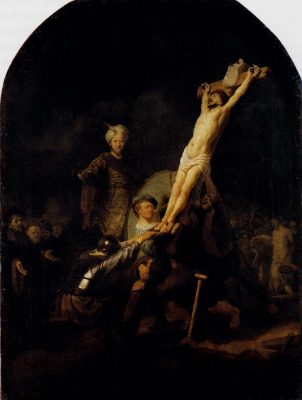
The Raising of the Cross
Here we find combined great art and great theology.
Those who are somewhat switched on not just to basic Christianity but to the world of great art will know that I have a double meaning in my title. I refer not just to the greatest – yet worst – act in all of human history (the crucifixion of Christ), but also to a famous painting by the same name.
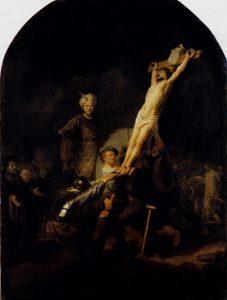 That Jesus was put on a cross is of course the heart of the Christian faith, and found in great detail in all four gospel accounts. It was his cruel death undertaken on our behalf that secures the salvation of all who turn to him in faith and repentance. This is what makes Christianity unique, and different from all other religions.
That Jesus was put on a cross is of course the heart of the Christian faith, and found in great detail in all four gospel accounts. It was his cruel death undertaken on our behalf that secures the salvation of all who turn to him in faith and repentance. This is what makes Christianity unique, and different from all other religions.
The core of this work was one of substitution: the sinless Christ suffered the punishment that we sinners deserved so that we might be made right with God. This is the decisive moment in all of human history when the greatest transaction ever takes place: the Son of God becomes sin so that sinners might become sons of God.
Or as the Apostle Paul explained in 2 Corinthians 5:21: “God made him who had no sin to be sin for us, so that in him we might become the righteousness of God.” This is an amazing exchange indeed. As Luther once put it:
That is the mystery which is rich in divine grace to sinners: wherein by a wonderful exchange our sins are no longer ours but Christ’s and the righteousness of Christ not Christ’s but ours. He has emptied Himself of His righteousness that He might clothe us with it, and fill us with it. And He has taken our evils upon Himself that He might deliver us from them… in the same manner as He grieved and suffered in our sins, and was confounded, in the same manner we rejoice and glory in His righteousness.
Theology in art
The cross is the focal point of human history, and everything is to be judged in its light. And the history of Western civilisation is in so many ways a testimony to this incredible action of Christ on our behalf. Indeed, some of the greatest works of art in history – including sculpture, poetry, literature, painting, and architecture – are centred on the work of Christ on the cross.
So many great hymnwriters of course celebrate this wondrous event. Let me offer just two of them. The famous English theologian and minister Isaac Watts (1674-1748) is known as the “Godfather of English Hymnody”. He penned the majestic hymn, “When I Survey the Wondrous Cross” in 1707. It goes like this:
- When I survey the wond’rous Cross
On which the Prince of Glory dy’d,
My richest Gain I count but Loss,
And pour Contempt on all my Pride.2. Forbid it, Lord, that I should boast,
Save in the Death of Christ my God:
All the vain Things that charm me most,
I sacrifice them to his Blood.3. See from his Head, his Hands, his Feet,
Sorrow and Love flow mingled down!
Did e’er such Love and Sorrow meet?
Or Thorns compose so rich a Crown?4. His dying Crimson, like a Robe,
Spreads o’er his Body on the Tree;
Then am I dead to all the Globe,
And all the Globe is dead to me.5. Were the whole Realm of Nature mine,
That were a Present far too small;
Love so amazing, so divine,
Demands my Soul, my Life, my All.
And the Welsh Christian William Rees (1802-1833) penned “Here is Love Vast as the Ocean.” It is said that this hymn became known as the love song of the great Welsh Revival of 1904. Here it is:
Here is love, vast as the ocean
Loving kindness as the flood
When the Prince of Life, our Ransom
Shed for us His precious blood
Who His love will not remember?
Who can cease to sing His praise?
He can never be forgotten
Throughout Heaven’s eternal daysOn the mount of crucifixion
Fountains opened deep and wide
Through the floodgates of God’s mercy
Flowed a vast and gracious tide
Grace and love, like mighty rivers
Poured incessant from above
And Heaven’s peace and perfect justice
Kissed a guilty world in loveNo love is higher, no love is wider
No love is deeper, no love is truer
No love is higher, no love is wider
No love is like Your love, o Lord
Here is one version of the hymn that you can listen to: https://www.youtube.com/watch?v=v8YOPj5TnUM
As to the famous pieces of art that my title refers to, there are at least two major artists who have works by this name. The Dutch master Rembrandt van Rijn (1606-1669) did an oil on canvas painting of this theme in 1633. The Flemish artist Peter Paul Rubens (1577-1640) did two by this name (also called “The Elevation of the Cross”): a larger piece in 1610 and a much smaller one in 1638.
Here I want to discuss the painting by Rembrandt. The 3 by 2 ½ foot painting can be viewed at the Alte Pinakothek art museum in Munich. What is significant about this great painting is of course the profound theological truth conveyed in it.


In the middle of the painting at the foot of the cross we find Rembrandt himself, helping to raise the cross. He knows the truth here: it was not just Roman officials or some Jewish leaders who sent Christ to the cross: it was all of us. You, me, Rembrandt, we all are responsible for nailing him to the cross.
That is because every single one of us are sinners. All of us are personally responsible for sending Christ to the cross to die a horrible death. As Paul says in Romans 3:10-18, quoting from various Old Testament texts:
As it is written:
“There is no one righteous, not even one;
there is no one who understands;
there is no one who seeks God.
All have turned away,
they have together become worthless;
there is no one who does good,
not even one.”
“Their throats are open graves;
their tongues practice deceit.”
“The poison of vipers is on their lips.”
“Their mouths are full of cursing and bitterness.”
“Their feet are swift to shed blood;
ruin and misery mark their ways,
and the way of peace they do not know.”
“There is no fear of God before their eyes.”
Rembrandt understood that truth, as should all of us. We are the ones who should have hung on that cross. But in God’s grace, he allowed his own Son to take our place. “By his stripes we are healed” as we read in Isaiah 53. This is tremendous news indeed.
As John Stott put it in his very important 1986 book, The Cross of Christ:
God could quite justly have abandoned us to our fate. He could have left us alone to reap the fruit of our wrongdoing and to perish in our sins. It is what we deserved. But he did not. Because he loved us, he came after us in Christ. He pursued us even to the desolate anguish of the cross, where he bore our sins, guilt, judgement and death. It takes a hard and stony heart to remain unmoved by love like that.
Amen and amen.
[1221 words]
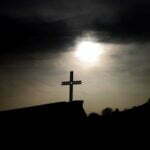
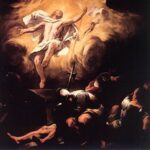













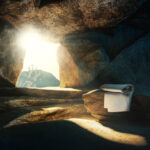
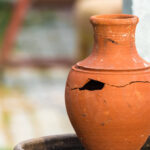



Here’s a great commentary on Rubens “elevation of the cross” by the excellent Smarthistory youtube channel:
As a non-Christian child at a church-school, I loved the hymn “When I survey the wondrous Cross … ” and still know all the words off by heart – except that I’ve never seen the fourth verse before.
Another favourite is Stuart Townsend’s 1995 hymn which covers the heart of your post (and Rembrant’s painting): “Ashamed, I hear my mocking voice, call out among the scoffers”:
How deep the Father’s love for us,
How vast beyond all measure,
That He should give His only Son
To make a wretch His treasure.
How great the pain of searing loss –
The Father turns His face away,
My sin upon His shoulders;
Ashamed, I hear my mocking voice
Call out among the scoffers.
It was my sin that held Him there
Until it was accomplished;
His dying breath has brought me life –
I know that it is finished
So I will not boast in anything,
No gifts, no power, no wisdom;
But I will boast in Jesus Christ,
His death and resurrection.
Why should I gain from His reward?
I cannot give an answer;
But this I know with all my heart –
His wounds have paid my ransom.
But Bill, is the Cross really “found in great detail in all four gospel accounts”? The accounts give very little of the physical horror and pain (as in Mel Gibson’s “the Passion of the Christ”) rather they Jesus states the absolute horror of separation from God, which is the real hell, and then, that “It is finished”.
Thanks Peter. I discuss Stuart Townend in another article that I wrote today – at least in part. See here: https://billmuehlenberg.com/2019/09/08/contemporary-christian-music-worth-running-with/
And I did not say that ‘the physical horror and pain’ of Christ is described in great detail in the four gospels, I simply said that the cross (meaning its overall history, significance, rationale, purpose, outcome, etc) is discussed in great detail. And that is certainly true. The German theologian Martin Kähler famously said a century ago of Mark’s Gospel that it is a “passion narrative with an extended introduction”. And all the gospels can be thought of in this way. For example, the last 10 chapters of John’s gospel of 21 chapters deal with the last week of Christ. That is, the cross and all that goes with it is a primary occupation of the gospel records.